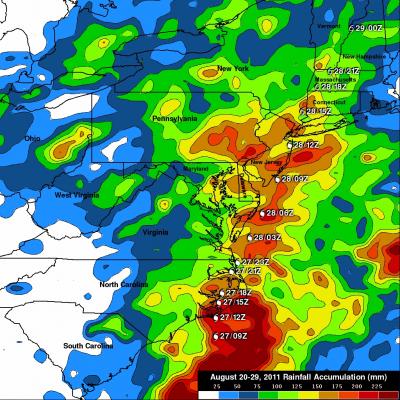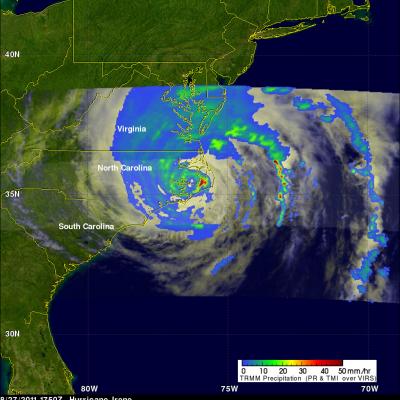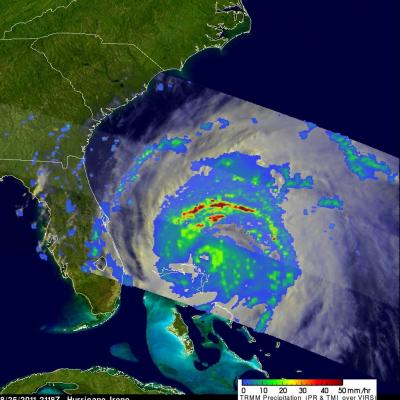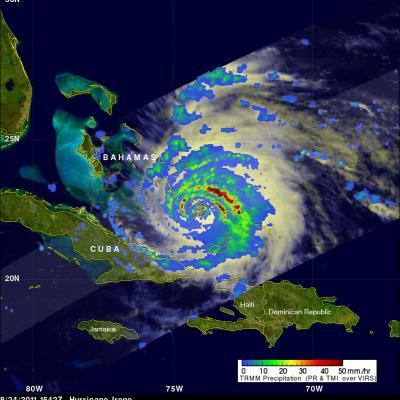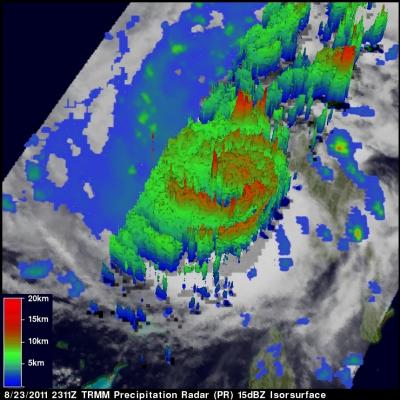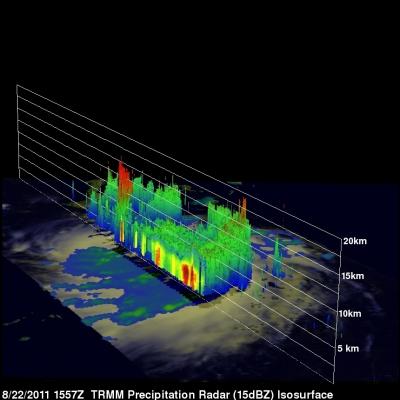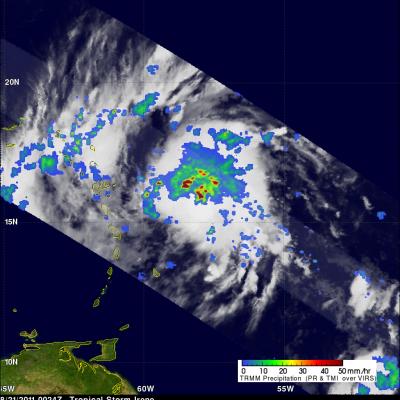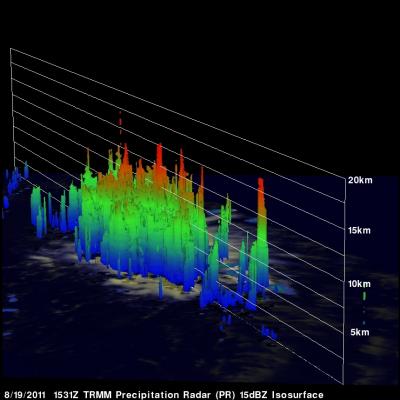Irene Drenches the Northeastern United States
The TRMM-based, near-real time Multi-satellite Precipitation Analysis (MPA) at the NASA Goddard Space Flight Center monitors rainfall over the global tropics. The analysis above shows MPA rainfall totals for the period from 20-29 August 2011. Hurricane Irene was dropping tremendous amounts of rainfall over the eastern United States during a part of this period and caused flooding from the Carolinas to the northeastern states. The heaviest rainfall totals of over 225 mm (~8.9 inches) were located in North Carolina where Irene first made landfall in the United States. Very heavy rainfall


